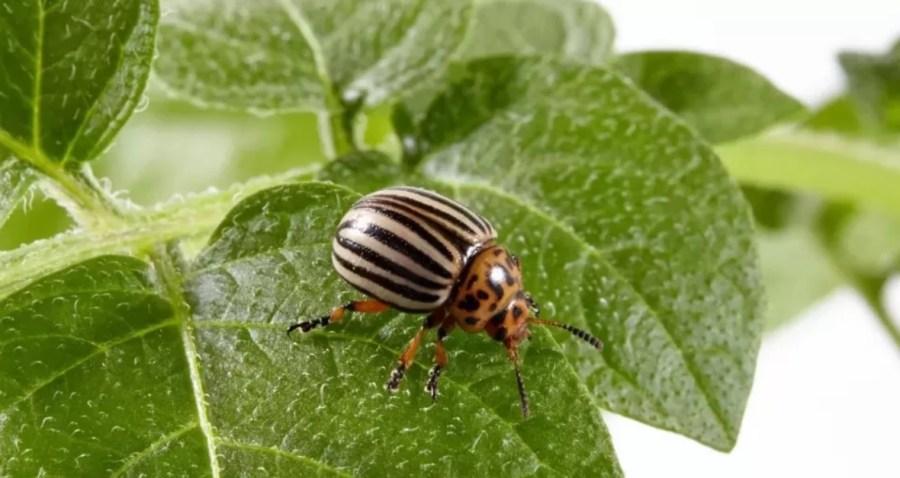A Colorado potato beetle larvae has been discovered in Kent, with farmers urged to remain vigilant.
The pest was identified on 11 July as confirmed by Defra and the Animal and Plant Health Agency (APHA), and although endemic in Europe, this is the first UK outbreak since 1977.
If uncontrolled, Colorado potato beetle (Leptinotarsa decemlineata) poses a significant threat to potato crops. Both the adults and larvae feed on the foliage of potato and other plants in the nightshade family, stripping them of their leaves.
Area survey
APHA is working closely with the affected grower to eradicate the pest from the site, including performing a 1km survey to determine if further cases occur beyond the immediately area.
UK chief plant health officer, Nicola Spence, says while the pest doesn’t pose a threat to human health, all growers, farmers, processors and the public are encouraged to remain vigilant and report sightings, especially in Kent.
Because the beetle isn’t endemic to the UK and is currently regulated as a Great Britain quarantine pest, APHA is obligated to act swiftly with Statutory Notices issued to ensure containment and eradication.
Distinct appearance
To assist with identification, the beetle is bright yellow or orange with black stripes and is usually between 8.5-11.5mm in length and 3mm in width. Its larvae are a reddish brown in colour, round and globular, and up to 15mm in length.
Although distinctive in appearance, there are several other beetles which can be frequently mistaken for the Colorado potato beetle.
Introduction
The pest is occasionally imported into the UK from continental Europe as ‘hitchhikers’ on non-host plant material, such as leafy vegetables, salad leaves, fresh herbs and grain.
During the past 70 years, there have been two outbreaks in the UK, one in 1976 and one in 1977. Both were eradicated shortly after detection.
Further information
The Colorado potato beetle plant pest factsheet provides more information about the beetle’s life cycle and provides information on how to differentiate it from native and introduced species.




